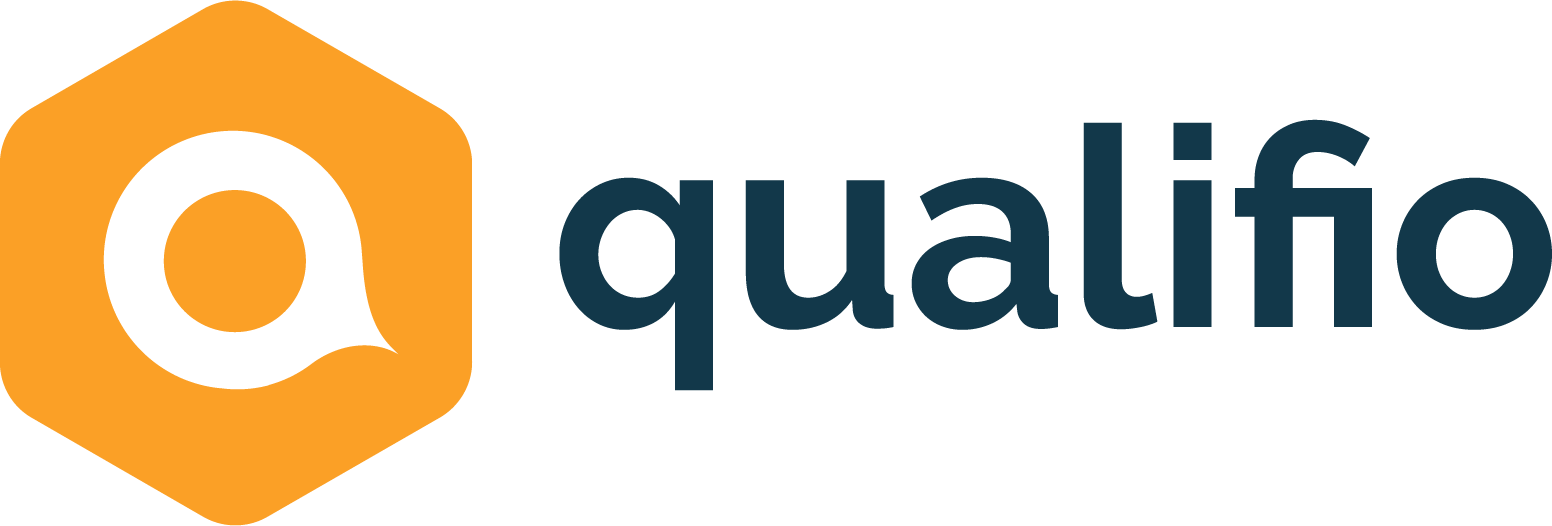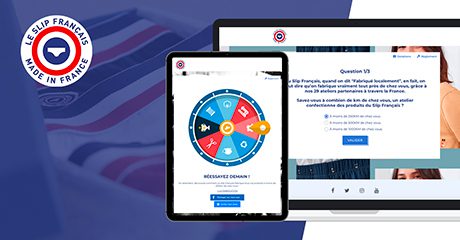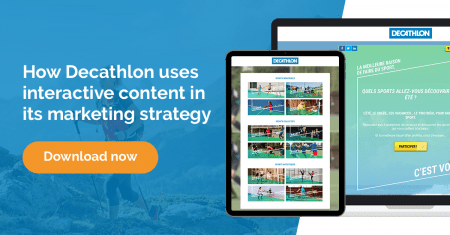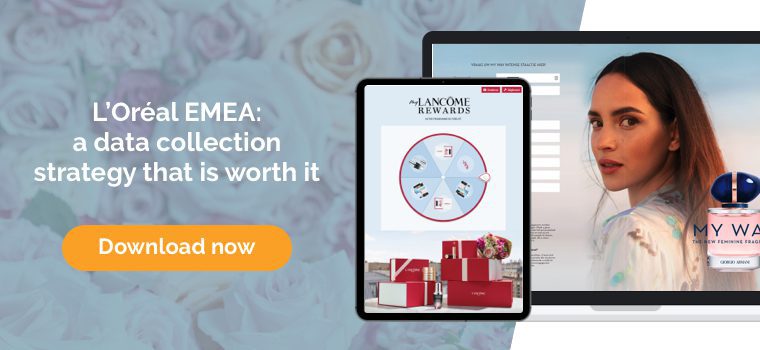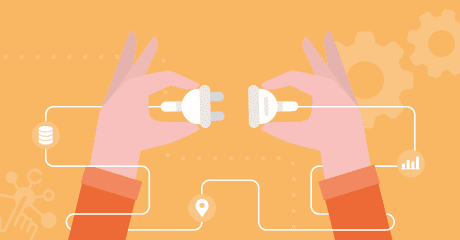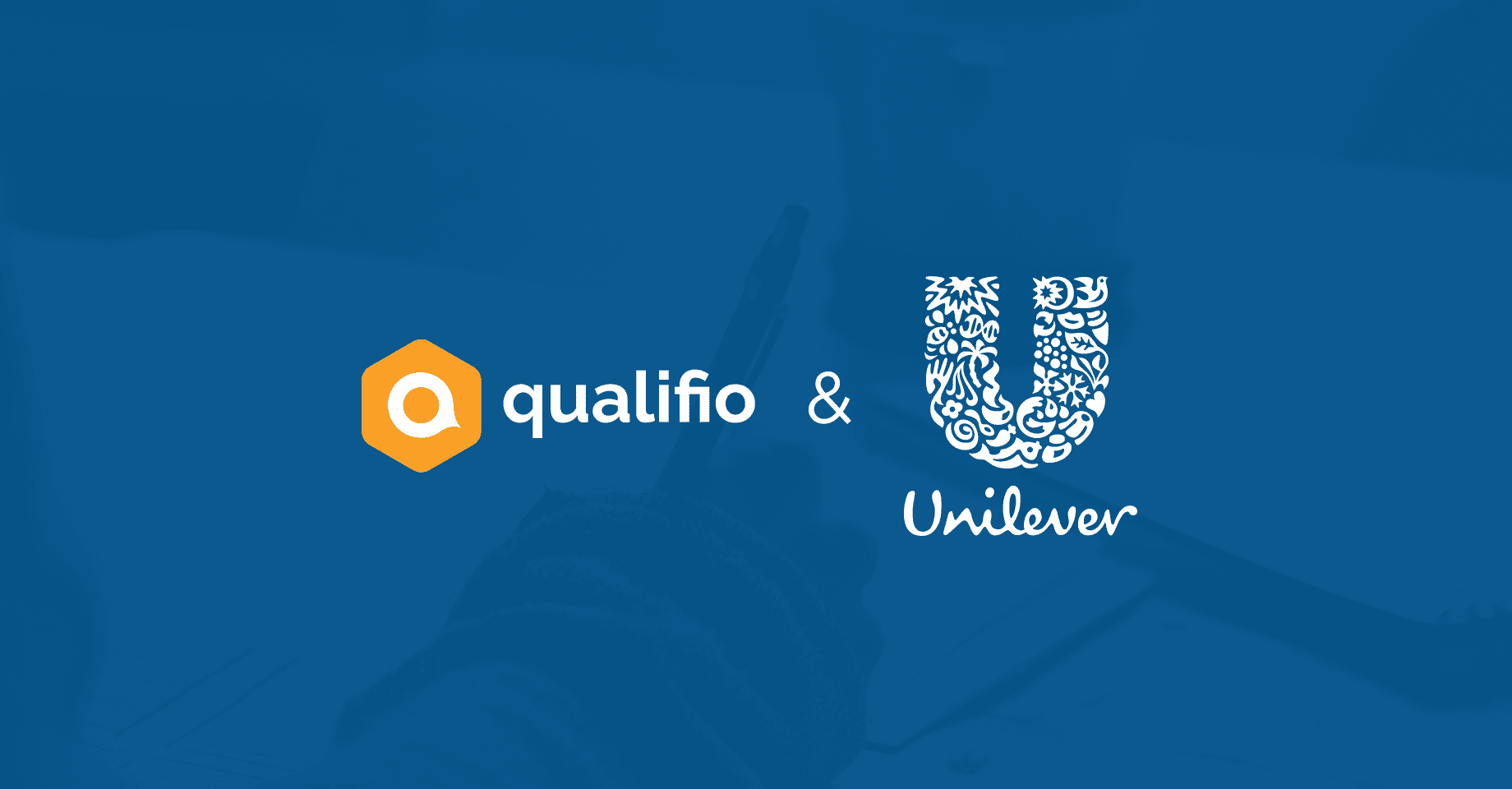What is a data collection strategy? Methods, tools and techniques
2.5 quintillion bytes of data are reportedly generated every day – take a second to get your head around the mind-boggling enormity of that number and then take a deep breath, we’ve got you and your data collection strategy covered!
Based on a workshop given by our Sales Manager, Rodrigue Laurent, and Partnership Manager, Thomas Janssens, during an Actito Activation day in Paris, this article will take you through the link between customer engagement and customer loyalty, thanks to an on-going and never-ending data collection strategy based on first-party and zero-party data.
Definition
Data collection is the process of gathering, measuring, and analysing customer data that will then be used for marketing and commercial decision-making processes, strategic planning and other purposes.
Qualitative first- and zero-party data is one of the most valuable resources brands and media groups own today. The more information they have about their audience, the better they can understand their needs and expectations.
Let’s take a look at where you might be in your data collection journey:
- ➕ Acquisition : I don’t have a database or I would like to increase the size of my database.
- 🤑 Enrichment : I’d like to get to know my audience better and to create segmentation in my database.
- 💪 Reinforcement : I’d like to make my customer journey as efficient as possible, and remove any conversion barriers.
- 👑 Loyalty : I’d like to reward my audience for all the interactions they have with my brand, and reinforce brand loyalty.
How to build a data collection strategy?
- 🤔 Where should I start?
- 🤨 Should I buy a database?
- 🤯 Oh no, a cookieless world is on the horizon!
- 😵💫 Hang on, what about GDPR?
I’m sure these questions have all crossed your mind if you’re considering setting up a database for your brand, or increasing the size of your existing database. And don’t worry, they’re absolutely the right questions to be asking yourself!
The main take-away here is that things have changed a lot in the last few years, not only with technology advancing at an increasingly rapid pace, but also with new laws and regulations being thrown in for good measure. So you can’t set up a database or increase the size of a database in the same way as you would have 10 years ago. You’re going to have to take the implications of GDPR into account and you’re going to have to build it yourself, as buying profiles and databases is not a long-term or sustainable option.
Building your own database will have the following advantages:
- You’ll get to know your audience and will gain a better understanding of their expectations and behaviour.
- Ahead of the cookieless world, you’ll be collecting invaluable first-party and zero-party data.
- You’ll be feeding your conversion funnel with priceless and qualified leads.
- And finally you’ll be providing your retargeting tools with ammunition for their campaigns.
Data collection methods
So the next obvious question is HOW? How do you start to build a data collection process and a database? What are the best data collection methods?
Well it doesn’t actually take that much, here are some data collection methods:
- 📲 A data collection tool – knowing that 69% of consumers are more willing to interact with a brand who provides games and uses interactive marketing campaigns which prizes to be won, it is key to be using a tool that incorporates a wide range of interactive experiences.
- 📊 A data analysis tool – so you’ve got data, but what are you going to do with it now? You’ll need a marketing automation tool, like Actito, to make the most of this hard-earned data and use it for retargeting, personalised emails and offers, …
- 🔁 Frequency: Don’t forget to try A/B testing at this stage, as this is the perfect time to be trying out different things. Make sure you include always-on campaigns and one-shot, more seasonal, campaigns (check out our interactive campaigns for international days). By covering these 2 axes, you’ll be sure to have a constant year-round incoming flow of data.
- 📤 Activation: ideally you’ll want a nice mix of activation points, from physical points-of-sale, to media placements and organic traffic on your website.
Le Slip Français are the perfect example of how to implement these 4 points, make sure you check out their success story to find out how they implement their data collection strategy.
How can a data collection strategy help with enrichment?
At this stage, you’ll have been collecting data for a few months so you’ve got some great KPIs to show:
- # of profiles collected
- # of newsletter opt-ins
- Newsletter open rates
- …

So you’ll now want to take things further and start having meaningful conversations with your audience, to get to know them better and gain an understanding of what they expect from their brand experience. 74% of consumers are reportedly frustrated about the fact that they receive marketing messages that aren’t relevant to them. There’s no point sending a dog owner information about cat food or the latest equipment for fish tanks!
According to a report from Forbes, 98% of marketers agree that personalised marketing helps to advance customer relationships. But only 32% of them claim to be getting it right and 18% are “very” confident that their personalisation strategy is successful. So where’s it going wrong? Why are marketers struggling to pull off the best trick in their toolbox? The key to nailing personalisation is having the right tools to process the data you’ve collected. You need good quality data, from a single and unified source.
The right message, at the right moment, on the right channel” – every Digital Marketing Manager ever
Collecting first-party and zero-party data is vital when it comes to enriching a database, especially as we move towards a cookieless world.
Let’s compare!
Let’s take a closer look at the differences between these 2 types of data, with the example of a loyal consumer:
| Zero-party data (proactively shared by Dusty) | First-party data (basic data) |
|---|---|
| Communication preferences: only send newsletters about sports and dogs, and only one email per week | Name: Cookie First name: Dusty |
| Dietary requirements: vegetarian, allergic to chillies | Address: Qualifiostraat, 238 – Amsterdam, The Netherlands |
| Family members: wife, no kids, 3 dogs | Language: Dutch |
| Travel wish list: Machu Picchu, Appalachian mountains, Corsica | Date of birth: August 3rd, 1997 |
| Quiz participations to win prizes: took part in 5 quizzes about dogs and won 2 prizes, and 3 quizzes about travel | Purchase history: has purchased for over €200 in the past 3 months |
| Profile from personality tests: coffee lover, loves holidaying in the mountains, heavy metal fan | Website behaviour: logs in twice a week to check promotions, usually in the evening |
Definitions: first- and zero-party data
First-party data is the information that customers provide in order to make a purchase or access a service. This information comes from your channels and platforms, like your website, your app or your social media accounts. Amongst first-party data you’ll find: purchase history, contact details, behavioural data (clicks, time spent on pages, …), and demographics.
Zero-party data is shared intentionally and proactively by your customers with you. This can include purchase intentions, personal context, communication preferences, and how the user wants the brand to recognise them. The best way to collect zero-party data is to ask for information in exchange for something of value to the customer. Interactive marketing formats are perfect for this: ask your users for their zero-party data in exchange for a quiz, a personality test result, a poll, a survey, … let your imagination run wild!
Personalising your marketing can also be done on different channels and with different types of content. Some users will prefer to receive a weekly email, others an SMS with your promotional offers. And from a content point of view, you can tailor what you send with the topics of your newsletter, or inspiration articles from your blog, or promotional offers relating to a user’s preferences. Your personalised content can also be seasonal: a birthday, Christmas, Mother’s Day, …
Decathlon, the sports equipment retailer, enriched their database by adding a question to their forms, asking their customers which sports club they belong to. They are now able to tailor their communication and promotional offers based on the answer to this question. Make sure you check out our Décathlon user case to find out other ways in which Décathlon have enriched their database.
The next step of your data collection strategy: reinforcing your conversion funnel
Having surmounted the difficult hurdle of personalising your marketing messages, the next challenge is to optimise your conversion funnel. A large proportion of your audience is likely still anonymous, so how can you get through to them to learn more about them?
You have 15 seconds to grab a user’s attention on your website before they move on to another page, and on average 97 to 98% of visitors are anonymous, so it’s no easy feat getting users down the conversion funnel.
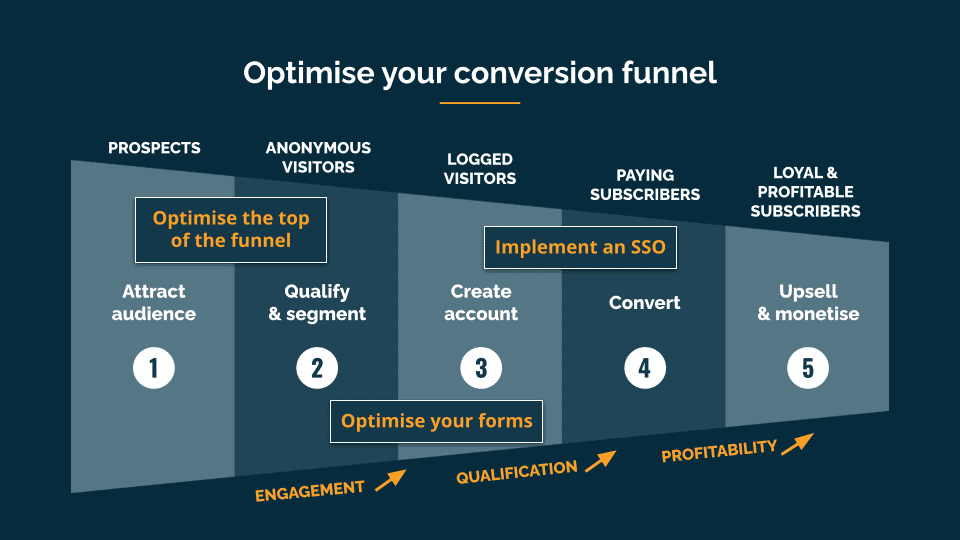
We recently took a closer look at how the conversion funnel can be optimised for media groups and these 5 steps can also be applied to a wider range of B2C brands. Here’s how:
- Optimise the top of the funnel with retargeting actions (Facebook Pixels, Google Ads, Amazon Product Ads), by using a DMP or with pop-ups.
- Optimise your conversion forms with conditional fields, by pre-filling forms fields and by masking input or providing help with input.
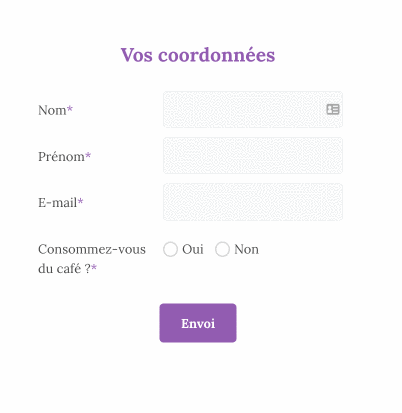
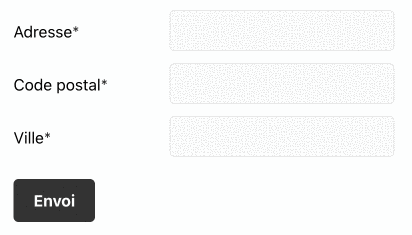
- Implement an SSO (single-sign on) on your website, to gain a unified view of the data you’re collecting, to ensure the quality of your data and to enable progressive profiling. This will allow you to ask your users for their first-party and zero-party across a period of time, rather than bombarding them with a long form at the start of their journey. The first time they connect you can ask them for their email and name for example, next time they log on why not ask them for their location and date of birth, etc until you have collected a comprehensive amount of data from your users.
L’Oréal, the leading cosmetic brand, has put together a data collection strategy that is worth it! They use Qualifio to increase the number of contacts in their database and to improve the quality of these contacts. Make sure you check out their case to find out more about their success story!
What makes a good data collection strategy? Customer loyalty as a result
Congratulations, at this stage you’ve come a long way and put a lot of work and effort into your data collection strategy! You’ve established a database, enriched it and created a community for your audience. And this sense of community that you’ve been building with your audience by sharing your brand values and DNA, by organising events and sharing your knowledge, is going to be key in this last stage: establishing and maintaining customer loyalty.
Considering customer loyalty brings up a whole other wave of questions: why set up loyalty programs? How can I reward my audience? What prizes should be on offer? What would the reach of my program be? At Qualifio we believe that the concept of loyalty has changed considerably in the last few years and should reward an audience for all of their interactions with a brand, not just for their purchases. So why should you consider setting up a loyalty program?
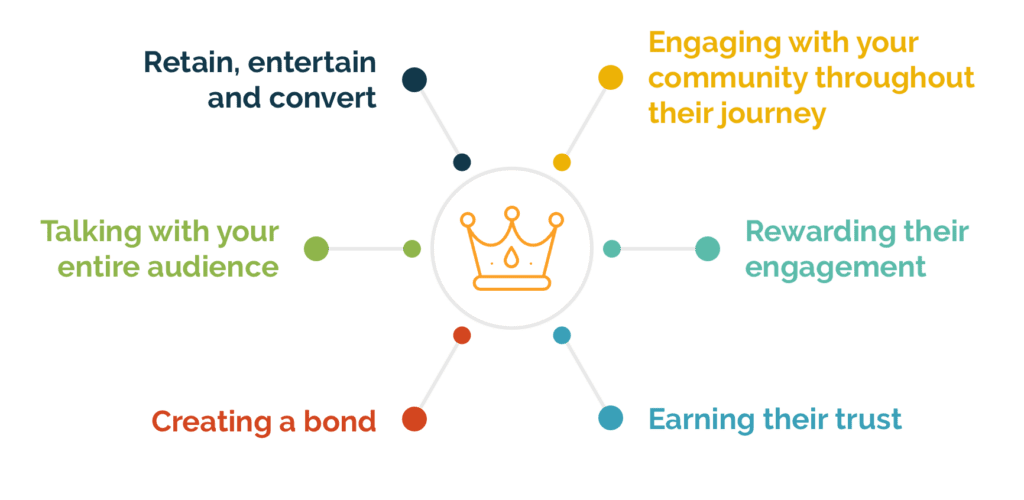
Recent studies have shown that a brand is 60 to 70% more likely to sell to an existing customer than to a new customer, that 73% of consumers are likely to recommend brands that have good loyalty programs, and that 87% of consumers are on the lookout for loyalty programs.
So the numbers are clearly supporting our claim that loyalty programs are the way forward for brands looking to build and maintain meaningful relationships with their audience. By setting up a loyalty program for your audience, you will be able to:
- ♻️ Engage your community throughout their customer journey, and not just when they’re a registered and purchasing user.
- 🎁 Reward their engagement and their interactions with your brand, not only their purchases.
- 👂 Get to know your audience better, by identifying how engaged they are and tailoring your messaging to each segment.
What challenges are ahead in data collection?
The coming months and years aren’t going to be easy in the digital ecosystem. Not only will third-party cookies be retired, leaving a void behind them in terms of advertising and audience insights. Increasingly restrictive privacy laws and higher consumer expectations will also be posing significant challenges for brands looking to get closer to their audience.
Some other challenges brands are facing when collecting data:
- accurate data collection and data quality issues – we took a closer look at this issue here.
- deciding what data to collect: how much is too much? And maybe what brands already have in their systems is enough!
- having the right systems and tools (CRM, DMP, …) in place to avoid data silos and to be able to harness the power of the valuable data collected
- how to predict future trends – where is the digital ecosystem headed? How are consumer behaviours and expectations going to evolve?
Conclusion
Wherever you are in your data collection journey – keep going! All the hard work you’re putting into it will pay off and you will be able to move forward in the cookieless world with all the tools in hand to engage with your audience and build a meaningful relationship with them. Collecting first-party and zero-party data is the way forward, so by building your data collection strategy and your marketing communication based on this data, you will be in a strong position to improve your customer loyalty by knowing your community and understanding what they’re expecting from their brand experience.
With over 50 interactive formats to choose from in our catalogue, Qualifio Engage is the perfect tool for your marketing campaigns. Allowing you to entertain and engage with your audience, whilst safely and compliantly collecting their first-party and zero-party data. And with Qualifio Loyalty, you can keep working on the meaningful relationships you’ve built with your community, by rewarding all of the interactions they have with you.
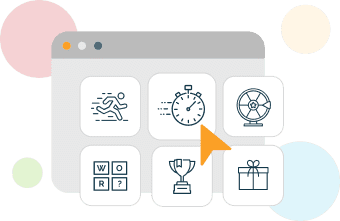
Over 50 interactive formats to choose from for your marketing campaigns!
